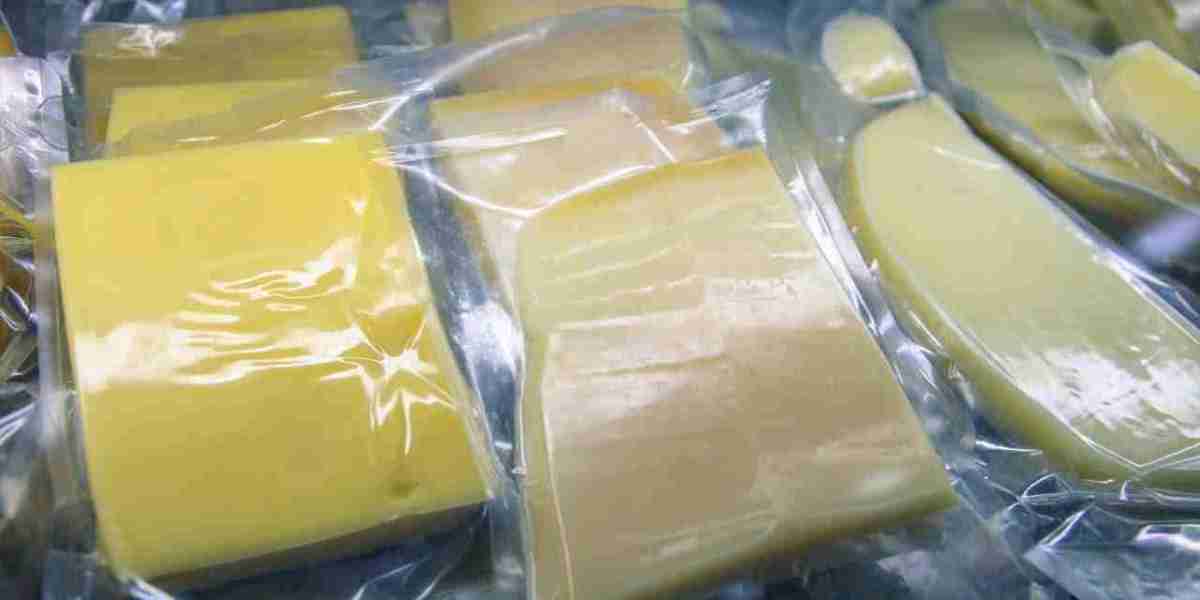The meat and cheese vacuum packaging market is continually evolving, driven by advancements in packaging materials and innovative technologies. These innovations are aimed at improving the efficiency, safety, and sustainability of food packaging solutions while meeting growing consumer demand for high-quality, fresh, and long-lasting products. As manufacturers strive to offer better preservation, reduced environmental impact, and enhanced convenience, the role of new materials and packaging innovations becomes increasingly vital. Below are some of the key materials and innovations reshaping the vacuum packaging market for meat and cheese products.
1. High-Barrier Films for Extended Shelf Life
High-barrier films are essential in vacuum packaging as they provide superior protection against oxygen, moisture, and light. These films significantly extend the shelf life of meat and cheese products by preventing spoilage and maintaining product quality. By using multi-layered films with specific barrier properties, manufacturers can ensure that the products remain fresh for extended periods.
Innovative Materials:
- EVOH (Ethylene Vinyl Alcohol): EVOH is one of the most commonly used barrier materials in vacuum packaging due to its excellent oxygen barrier properties. It helps prevent the oxidation of fats and proteins in meat, reducing the risk of spoilage and preserving flavor and texture.
- PET (Polyethylene Terephthalate): PET is often used in combination with other materials like EVOH to create multi-layered films that provide high mechanical strength, durability, and an excellent barrier to oxygen and moisture.
- PA (Polyamide): PA, or nylon, is used in vacuum packaging for its strength, puncture resistance, and ability to act as a barrier to gases and moisture. It is particularly useful for vacuum-sealing meat and cheese products that require robust packaging to withstand handling and transportation.
2. Biodegradable and Compostable Packaging Materials
With increasing concerns over environmental sustainability, the demand for biodegradable and compostable materials in food packaging has risen. The meat and cheese vacuum packaging market is shifting toward using materials that are more eco-friendly without compromising product quality or safety. These materials are designed to break down naturally after use, reducing the environmental footprint of packaging waste.
Innovative Materials:
- PLA (Polylactic Acid): PLA is a biodegradable plastic made from renewable resources like corn starch or sugarcane. It is increasingly being used in the food packaging industry as an alternative to traditional plastics. PLA-based vacuum bags are gaining popularity for packaging cheeses and meats, offering a more sustainable option.
- PVA (Polyvinyl Alcohol): PVA is a water-soluble, biodegradable plastic that can be used in the packaging of food products. It is particularly useful for packaging cheese products where water vapor transmission is crucial to maintaining freshness.
- Cellulose-Based Films: Derived from renewable plant fibers, cellulose-based films are a sustainable option for vacuum packaging. These materials are biodegradable and have excellent barrier properties, making them a promising choice for the food packaging industry.
3. Vacuum Skin Packaging (VSP)
Vacuum Skin Packaging (VSP) is an advanced technology that involves using a highly formable film to tightly conform to the shape of the product, creating a vacuum-sealed environment. This packaging method provides excellent protection for meat and cheese products, offering a premium appearance and enhanced shelf life. VSP technology is particularly suitable for high-end meat cuts, fresh cheese, and other premium food products.
Innovations:
- Formable Films: VSP relies on high-quality formable films that can be molded to the exact shape of the product. These films are often made from materials such as PET, PA, and PVC, which are highly flexible and have good barrier properties.
- Better Aesthetic Appeal: The tight fit of VSP films creates a vacuum-sealed package with a sleek, attractive presentation. This is particularly important for high-end meats and cheeses, as it enhances product appeal while extending shelf life.
4. Modified Atmosphere Packaging (MAP) Integration
Modified Atmosphere Packaging (MAP) involves altering the gases inside the vacuum packaging to extend the shelf life of food products. MAP is often used in combination with vacuum packaging to create the ideal atmosphere for preserving meat and cheese products. By controlling the levels of oxygen, carbon dioxide, and nitrogen, MAP helps preserve freshness and prevent spoilage without the need for chemical preservatives.
Innovations:
- Gas-Filled Vacuum Packaging: Combining vacuum sealing with a controlled gas atmosphere can further extend the shelf life of meat and cheese products. The use of nitrogen or carbon dioxide in the packaging process helps prevent the growth of bacteria and molds, ensuring product freshness.
- Smart Packaging Systems: Some manufacturers are incorporating smart packaging technologies into MAP solutions, allowing real-time monitoring of temperature and humidity within the package. This innovation enhances the efficiency of the preservation process and ensures that the products remain safe and fresh throughout the supply chain.
5. Active and Intelligent Packaging Solutions
Active and intelligent packaging solutions are designed to interact with the product or its environment to maintain freshness and improve food safety. These solutions include features such as antimicrobial properties, moisture control, and freshness indicators, which are becoming more common in the meat and cheese packaging market.
Innovations:
- Antimicrobial Packaging: Active packaging films containing antimicrobial agents such as silver nanoparticles or essential oils can inhibit the growth of harmful bacteria on meat and cheese surfaces. This not only extends shelf life but also improves the overall safety of the product.
- Moisture-Absorbing Films: Moisture control is crucial in maintaining the quality of meat and cheese products. Active packaging materials that absorb excess moisture can prevent the growth of bacteria and mold, which thrive in humid environments.
- Freshness Indicators: Intelligent packaging systems can include freshness indicators that change color when the product is no longer fresh, providing consumers with a visual cue of product quality. This technology is particularly useful for high-value meat and cheese products where consumers expect optimal freshness.
6. Multi-Layered Packaging for Protection and Durability
Multi-layered vacuum packaging films are designed to offer superior durability, protection, and barrier properties. These films are typically made by combining different materials, such as PET, EVOH, and PA, to create a strong, puncture-resistant barrier that protects meat and cheese from contamination, spoilage, and physical damage.
Innovations:
- Barrier-Enhanced Films: Multi-layer films with enhanced barrier properties can extend the shelf life of meat and cheese products by providing superior protection against oxygen, moisture, and light. These films help retain the products' flavor, texture, and nutritional value.
- Improved Durability: Multi-layer packaging is especially beneficial for handling and transportation, providing durability and preventing punctures, tears, or other damage during the supply chain process.
Final Thoughts
The meat and cheese vacuum packaging market continues to evolve with innovations in materials and technologies designed to improve food safety, extend shelf life, and reduce environmental impact. High-barrier films, biodegradable materials, advanced packaging technologies such as VSP and MAP, and smart packaging solutions are all playing a crucial role in enhancing the functionality of vacuum packaging. These innovations not only improve product preservation but also meet the growing consumer demand for sustainable, high-quality, and convenient food packaging solutions.



